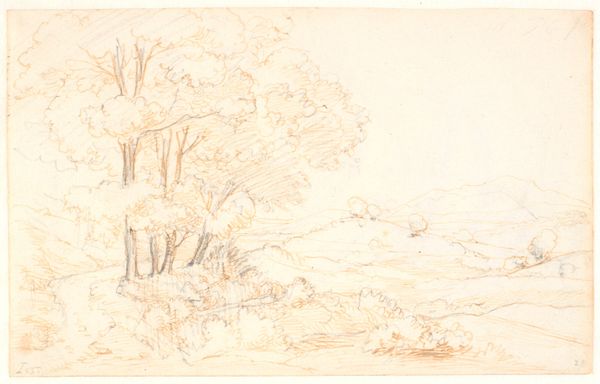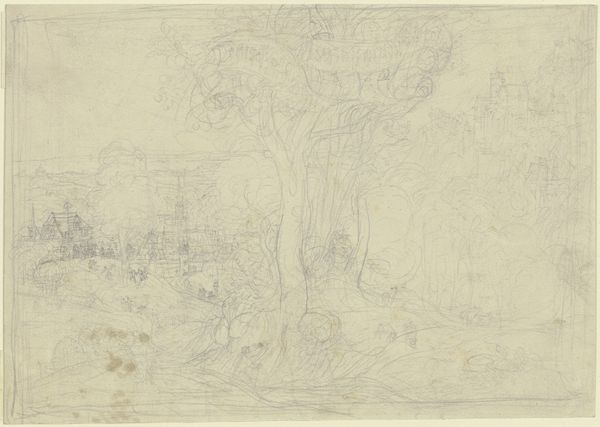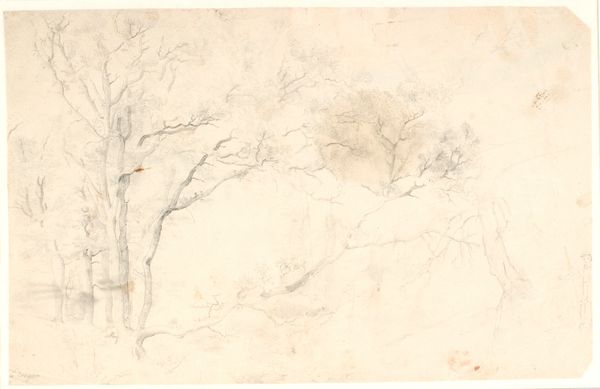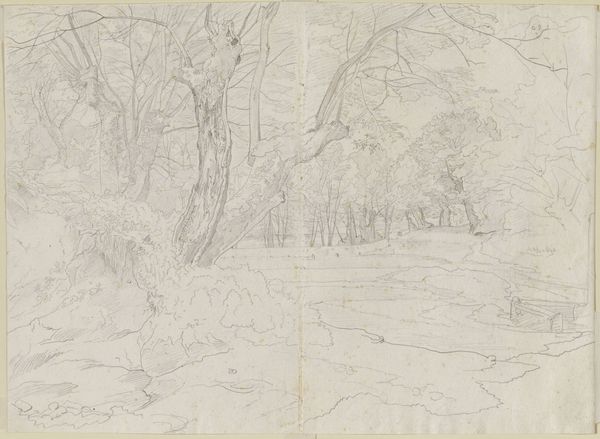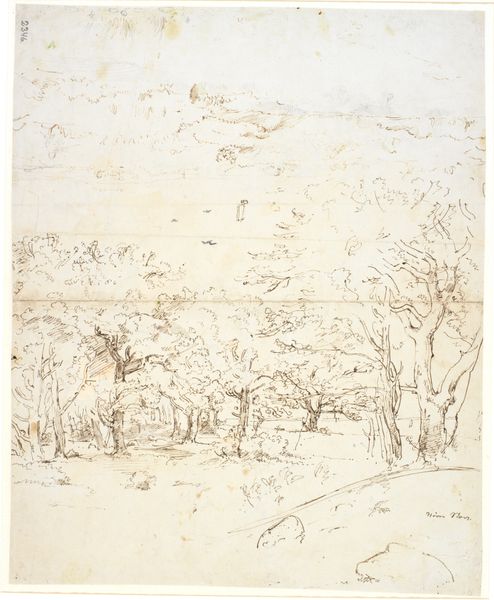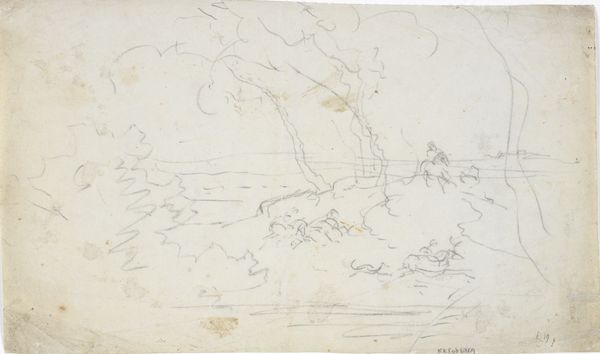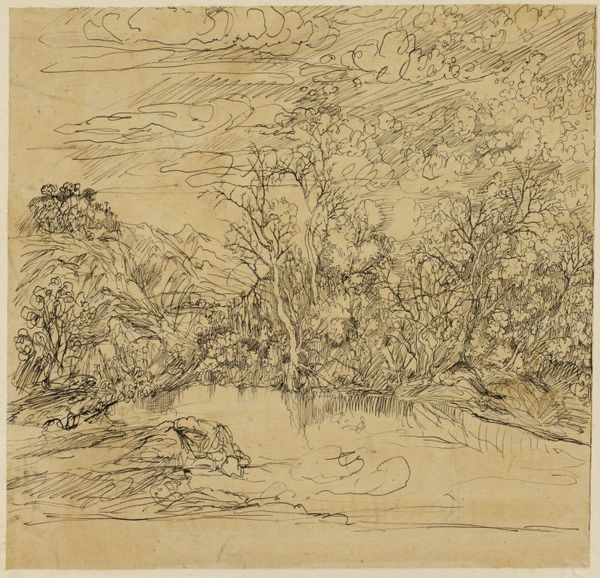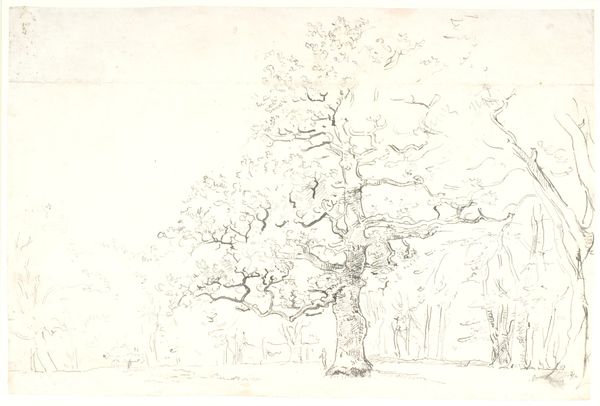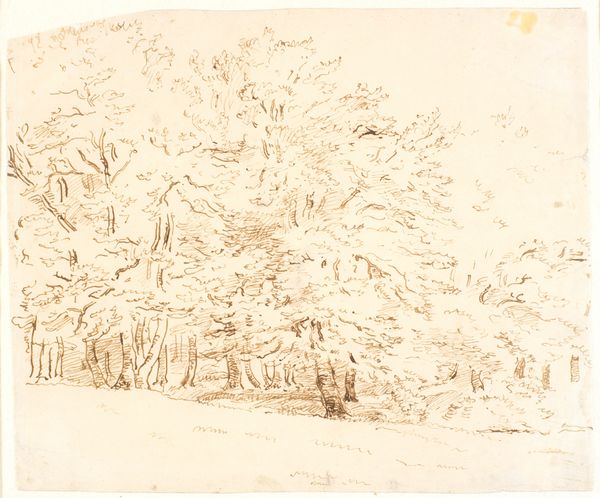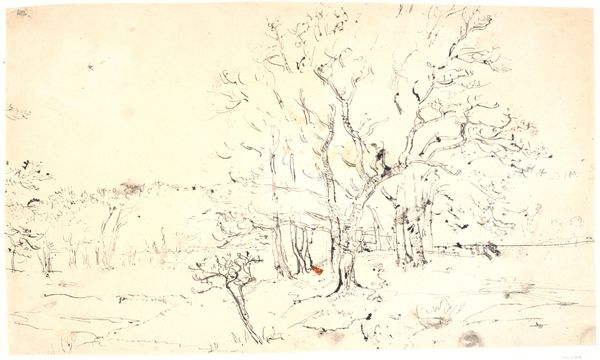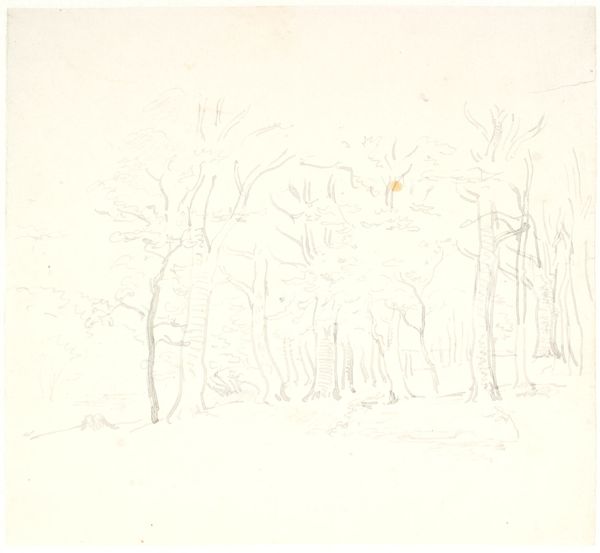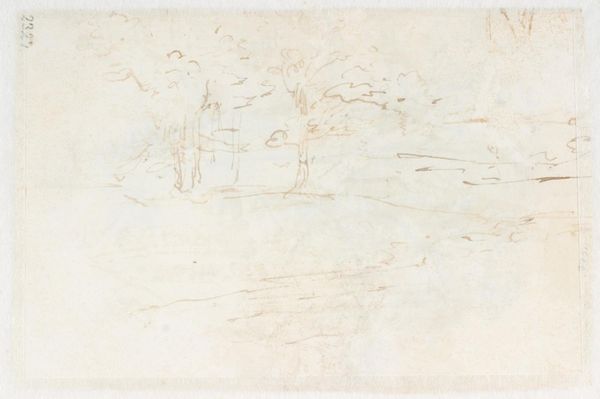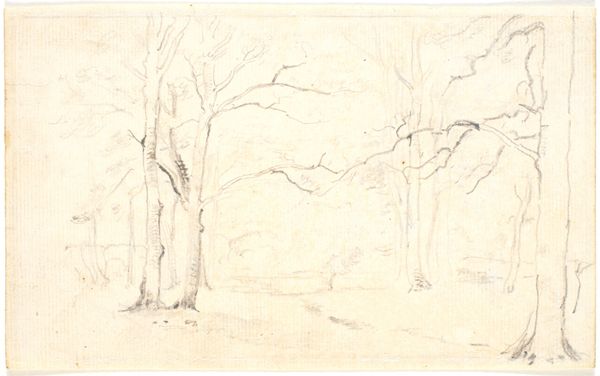
Landskab med en bæk, der i forgrunden løber mellem træer 1840s
0:00
0:00
drawing, ink
#
drawing
#
landscape
#
etching
#
ink
#
romanticism
#
realism
Dimensions: 167 mm (height) x 209 mm (width) (bladmaal)
Curator: Welcome. We’re standing before "Landscape with a Stream Running between Trees in the Foreground" by Dankvart Dreyer, created in the 1840s. It’s currently held here at the SMK, Statens Museum for Kunst. Editor: It's faint, almost ghost-like. I see the lines of trees and what seems to be a path, or creek, but it all fades into the pale background. An unfinished quality imbues the scene with tranquility, I think. Curator: Indeed. Dreyer used ink in this drawing, etching delicate lines onto the page. We see here how the Romantic movement engaged with the ‘natural’, which was not just visual depiction. We are encouraged to contemplate what shaped the cultural status of resources like forests and water. Editor: Water and trees – ubiquitous symbols of life and renewal. I’m drawn to the deliberate sketchiness of the scene; a rapid capture from real life. Do you think the ambiguity reflects the era’s feelings about the taming of nature? Curator: Perhaps. The 1840s in Denmark was a time of agricultural reform and changes in land ownership. Dreyer presents not only the aesthetic appeal of this natural landscape, but suggests it is also very much entwined with a web of labour practices. This artwork's appeal lies not in just seeing the surface image, but in contemplating production. Editor: I think you're right about there being more here. Look how the light plays in the faint lines that mark the stream. The composition draws your eye deeper and deeper, echoing a yearning for an unrecoverable idealized nature. This work may very well symbolize the cultural tensions between industrialization and the past, with that tension displayed via ink on paper. Curator: The relatively accessible medium - pen and paper - itself challenges established traditions. This also brings it closer to 'common' or 'folk' craft traditions than other artworks of the time may have done. Editor: That is something to be admired, as this allows art to become the subject of an expansive discourse on societal concerns. Curator: And as an artifact itself, Dreyer's drawing reflects these economic and ideological transformations of its time. Thank you for unpacking all these things, the cultural and material conditions embedded in this drawing truly speak volumes. Editor: A pleasure. It's amazing what symbolism and visual cues can tell us about a time, a place, and its artistic interpretation.
Comments
No comments
Be the first to comment and join the conversation on the ultimate creative platform.
